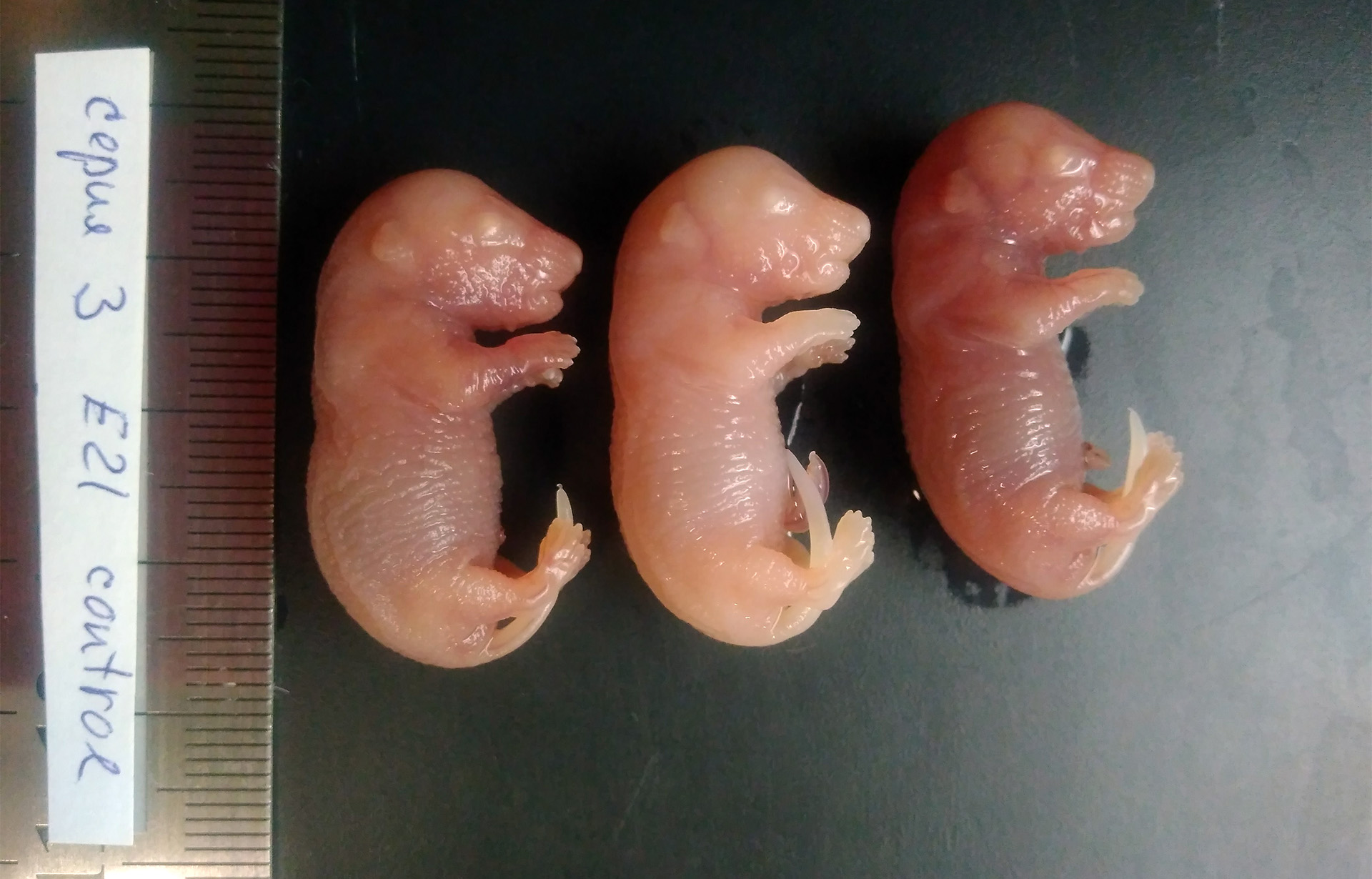
Russian scientists as part of an international team studied the effect of serotonin on the formation of adrenal glands in rodents. It turned out that with an increase in its level during a certain period of pregnancy, fewer cells that produce adrenaline and norepinephrine are formed in the adrenal glands of the young. This change makes rodents less aggressive and anxious, but more friendly and inquisitive - it is these individuals that provide range expansion and migration in the wild. A similar mechanism for regulating the size of the adrenal glands has also been identified in human development. The results of the study, supported by a grant from the Russian Science Foundation (RSF), were published in the journal Nature Communications.
The behavior of vertebrates, including humans, is determined not only by brain activity: for quick decision-making in critical situations, the work of the endocrine system is also of great importance. One of its glands are the adrenal glands - paired organs above the upper part of the kidneys. In response to stressful factors, such as danger or physical exertion, the cells of their internal so-called brain substances release adrenaline and noradrenaline into the blood. It is on the activity of the chromaffin cells of the adrenal medulla that the body's ability to quickly navigate the situation and implement the "fight or flight" defense strategy depends. In the process of differentiation from their precursors, chromaffin cells form receptor proteins on the surface for the “happiness hormone” serotonin, but it still remained a mystery what follows the activation of these receptors. The international team, which included Russian scientists, unveiled this pattern.
The researchers injected pregnant rodents with a precursor of serotonin, which is converted to serotonin in the mother's body and in the placenta. They did this at the stage of embryo development, when the differentiation of chromaffin cells occurs. The authors then studied the tissues of the adrenal glands of the offspring. In this they were helped by the most modern methods of transcriptomics of individual cells, that is, studies of the activity (expression) of genes, and various biochemical and histological approaches. The researchers also conducted experiments with genetically modified lines of animals that were unable to produce serotonin, and with the help of pharmacological preparations they changed the activity of the corresponding receptors. Finally, the authors studied the behavior of the young of females with an increased content of the “hormone of happiness” in the body and examined samples of the adrenal glands of wild Siberian voles, which are characterized by waves of migration.
It turned out that an increase in the level of serotonin during the critical period of pregnancy and activation of receptors in the precursors of chromaffin cells leads to a decrease in the size of the entire adrenal medulla. Normally, such a negative feedback mechanism does not allow young cells to divide excessively, and protects the body from the occurrence of a number of malignant tumors.
The size of the adrenal medulla, which is laid during the development of the embryo, remains in the rodent for the rest of its life, and fewer cells secrete fewer hormones, which significantly affects behavior. Animals with less brain matter are less aggressive and anxious, but more inquisitive and friendly. Studies have shown that in wild populations of voles, it is these animals that ensure the migration of the species, the change of its range and the development of new territories.
The level of serotonin in the placenta is very variable and sensitive to the external conditions in which the pregnant mother is. Physical activity, moderate stress caused by social contacts or lack of food lead to its increase, thus “signaling” to the unborn descendant about the conditions that they will meet after birth: there are many relatives around, competition is great and already his generation will have to master new places.
“The serotonin-mediated mechanism we have discovered that regulates the number of adrenal chromaffin cells reveals one of the possible ways of epigenetic, that is, due to external factors, transmission of information from mother to the young. It provides a kind of prenatal programming of long-term changes in the behavior of offspring, which explains the emergence of various types of response to stress during development,” says one of the co-authors of the study, Victoria Melnikova.
“Further studies will establish how the contribution of the epigenetic effect of serotonin to the variability of chromaffin organs in wild and domesticated animals is compared to genetic factors. The detection of serotonin receptors on progenitor cells will allow in the future to develop new drug therapy strategies for certain types of malignant tumors”, says Elena Voronezhskaya, one of the authors of the article and head of the project on a grant from the Russian Science Foundation.
The study was conducted by the staff of the N.K. Koltsov Institute of Developmental Biology RAS (Moscow), together with colleagues from the National Medical Research Center for Endocrinology of the Ministry of Health of Russia (Moscow), the V.V. Zakusov Research Institute of Pharmacology (Moscow), Institute of Cytology RAS (St. Petersburg), Institute of Translational Biomedicine (St. Petersburg), I.M. Sechenov First Moscow State Medical University (Moscow), A.N. Severtsov Institute of Ecology and Evolution RAS (Moscow), Karolinska Institute (Sweden), Medical University of Vienna (Austria) and international research institutes in Germany, the Czech Republic, Italy and France.
